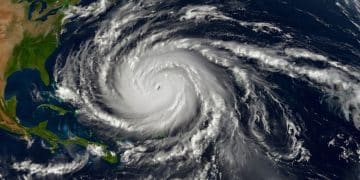Southwest heat wave wildfire risk in 2025
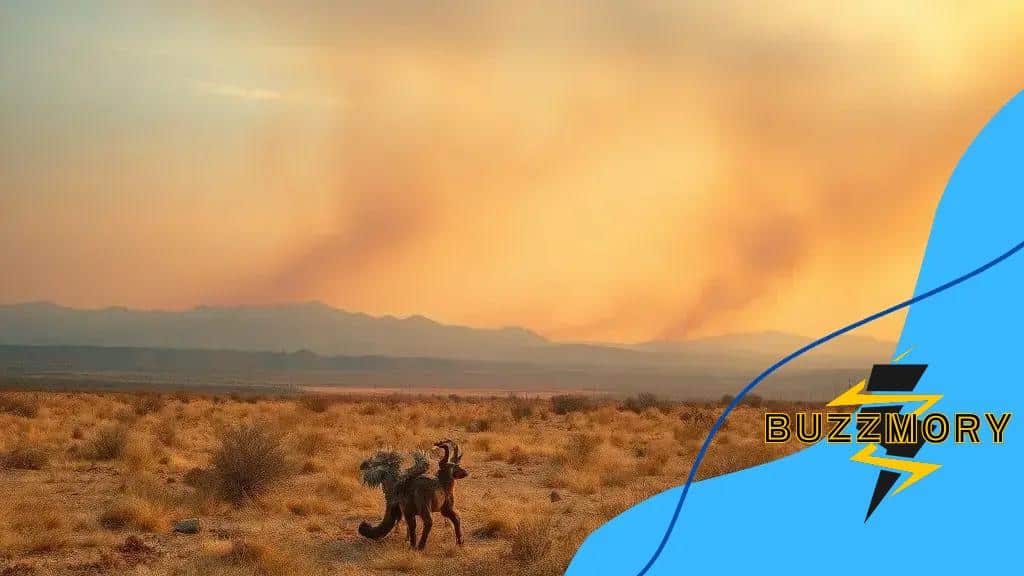
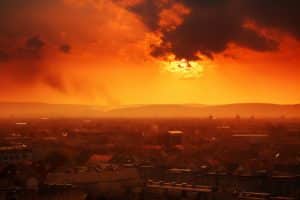
Communities across the Southwest face growing challenges as the Southwest heat wave wildfire risk intensifies.
With record-breaking temperatures, prolonged droughts, and unpredictable storms, the region is confronting some of its most dangerous summers on record.
Beyond discomfort, these extreme weather patterns amplify the threat of wildfires, putting lives, homes, and ecosystems at risk.
As the climate continues to shift, residents are asking: what causes these events, how do they affect daily life, and what steps can be taken to stay safe?
Understanding the relationship between heat wave conditions and wildfire hazards is essential to building resilience.
Understanding the causes of wildfire risks
Comprehending the causes of wildfire risks is vital for communities across the Southwest. Prolonged heat wave conditions, higher temperatures, and changing rainfall patterns have left the region increasingly vulnerable to fast-moving fires.
These dangers arise from both natural triggers and human activities, with climate change intensifying their impact year after year.
Natural Causes Driving Wildfires
Wildfires often begin with natural events. Lightning strikes during summer storms can ignite bone-dry vegetation in an instant, especially when combined with hot winds.
Seasonal droughts also strip soils of moisture and weaken plants, turning forests and brushlands into highly combustible fuel.
These natural drivers are becoming more intense as climate instability brings longer dry seasons and harsher heat wave periods to states like California, Nevada, and Arizona.
Human Factors Increasing the Risk
Human behavior is another critical contributor to wildfire outbreaks. Unattended campfires, improperly discarded cigarettes, and sparks from vehicles or equipment often spark destructive blazes.
Rapid urban growth near forested and grassland areas heightens exposure, placing homes and entire neighborhoods in high-risk zones.
When development pushes into fire-prone land, the chances of ignition multiply and the consequences become far more severe.
- Always practice safe handling of campfires and extinguish them completely.
- Dispose of cigarettes responsibly to avoid accidental ignition.
- Maintain vehicles and outdoor tools to prevent sparks in dry areas.
- Follow local burn restrictions during heat wave periods to reduce risks.
Climate Change and Land Use Pressures
The influence of climate change cannot be overlooked. Extended droughts, hotter summers, and shifting precipitation patterns fuel more frequent and more intense wildfires.
Heavy rains in certain years can lead to vegetation surges that later dry out, creating additional fuel for fires.
Meanwhile, land use changes such as deforestation and suburban development increase ignition points and complicate firefighting strategies.
By recognizing these overlapping factors, residents and authorities can better prepare for the wildfire season. Awareness of how natural cycles, human actions, and climate change interact is the foundation for stronger prevention and community safety.
Recent trends in southwest heat waves
In recent years, heat wave events across the Southwest have grown more intense, frequent, and prolonged, dramatically increasing the threat of wildfires.
These climate shifts impact not only the environment but also public health, agriculture, and urban infrastructure.
Rising frequency and intensity
Data shows that states like California, Nevada, and Arizona are facing record-breaking temperatures more often, with highs exceeding 100°F (40°C).
Cities such as Phoenix and Las Vegas are among the hardest hit, enduring longer stretches of extreme heat. These conditions dry out vegetation quickly, leaving vast landscapes primed for ignition.
Longer duration and hotter nights
Unlike in the past, today’s heat wave events can last for weeks rather than days. Nighttime temperatures often remain dangerously high, preventing any meaningful relief.
This lack of recovery overnight increases cases of heat exhaustion and dehydration, strains hospitals, and places vulnerable groups such as the elderly and outdoor workers at greater risk.
Combined impacts with summer storms
In some regions, heat wave conditions have coincided with isolated thunderstorms. These storms can spark wildfires through lightning strikes and, in turn, trigger flash floods or landslides in areas already weakened by burns.
The result is a cycle of overlapping hazards where extreme heat, fire, and flooding compound risks for communities.
Tips for residents during heat waves
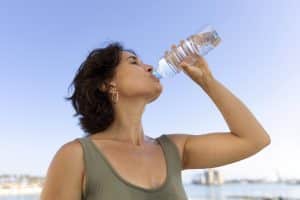
When a heat wave strikes, staying safe requires more than comfort measures, it can be a matter of protecting your health and even saving lives.
Extreme temperatures strain the body, weaken infrastructure, and heighten wildfire risks, so residents must prepare in advance and respond wisely.
Stay hydrated and protect your body
Drinking water consistently throughout the day is essential, even if you don’t feel thirsty. Avoid alcohol and caffeinated drinks, which increase dehydration.
Lightweight, loose-fitting clothes in light colors help reflect sunlight, while sunscreen, hats, and sunglasses protect against harmful UV exposure during a heat wave.
Keep indoor spaces cool
Homes can quickly become dangerous in extreme heat. Close curtains or blinds during the hottest hours to block sunlight, and use fans or air conditioning to maintain safer temperatures indoors.
If your home becomes too hot, cooling centers and public facilities are safe alternatives during a heat wave.
Reduce risks and look after others
- Avoid outdoor exercise or heavy labor during peak hours, usually between late morning and early evening.
- Prepare emergency supplies with water, first aid, and non-perishable food in case of power outages.
- Check regularly on elderly relatives, young children, and neighbors, as they are most vulnerable to heat wave impacts.
By following these steps, residents strengthen both their personal safety and their community’s resilience. Small daily choices, such as monitoring hydration or checking on a neighbor, can make a decisive difference during prolonged periods of extreme heat.
How climate change influences wildfire frequency
The link between climate change and wildfire activity is becoming increasingly clear. Rising global temperatures and prolonged heat wave conditions are transforming the Southwest into one of the most fire-prone regions in the United States.
As ecosystems struggle to adapt, communities are facing longer fire seasons, more intense flames, and higher risks to life and property.
Rising temperatures and extended heat waves
Global warming has driven average temperatures higher, creating drier landscapes and increasing the length of heat wave events. Extended heat dries out vegetation, turning forests, grasslands, and even suburban yards into combustible fuel.
These conditions not only raise the likelihood of wildfires but also make them spread more rapidly once ignited.
Shifts in precipitation and drought cycles
Climate change has disrupted normal rainfall patterns. Heavy rains can lead to explosive vegetation growth, which later dries during heat wave periods and becomes highly flammable. A
t the same time, prolonged droughts strip the soil of moisture and weaken plants, leaving them more susceptible to burning. This cycle of wet growth followed by extreme dryness has created ideal conditions for frequent and severe wildfires.
Intensified extreme weather events
Climate change also increases the likelihood of high winds and erratic storms, which further complicate fire control. During a heat wave, lightning strikes from summer storms can spark new fires, while dry winds push existing flames into populated areas.
Fire seasons that once lasted a few months now stretch nearly year-round, overwhelming resources and demanding greater preparedness.
Understanding this connection between climate change and wildfire frequency is crucial.
By recognizing how extreme heat wave events interact with rainfall shifts and wind patterns, communities can better anticipate risks and implement stronger safety strategies to adapt to a rapidly changing climate.
Local resources for wildfire safety
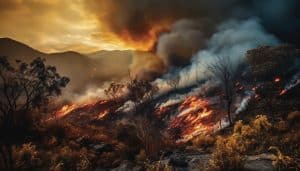
When extreme conditions like a heat wave overlap with wildfire season, local resources become critical for protecting lives and property.
Communities across the Southwest have developed networks, programs, and tools that help residents prepare, respond, and recover more effectively.
Emergency services and preparedness programs
Local fire departments and emergency management agencies regularly provide wildfire safety workshops and distribute guidelines for creating defensible space around homes.
These agencies also run seasonal awareness campaigns, especially during prolonged heat wave periods, to remind residents about evacuation planning and safe practices.
Many towns organize drills so that families know exactly how to react if a fire spreads nearby.
Community alerts and real-time warnings
Most counties in fire-prone areas offer opt-in alert systems that deliver real-time notifications about wildfire outbreaks, evacuation orders, and extreme heat wave warnings.
These alerts, often sent by text or email, ensure that residents have immediate access to life-saving information. Some systems also provide updates on shelter locations and road closures during emergencies.
Support from local organizations
Nonprofit groups and community associations complement government efforts by offering education programs, volunteer training, and resources like emergency supply kits.
They often focus on vulnerable populations, ensuring that seniors, low-income households, and those with medical conditions have access to assistance during fire and heat wave events.
By taking advantage of these resources, residents can greatly reduce their vulnerability to wildfire risks.
Staying connected with emergency services, signing up for alerts, and engaging with community organizations creates a stronger collective response when extreme weather and fire threats converge.
Conclusion: facing the future of heat and fire risks
The growing Southwest heat wave wildfire risk highlights how extreme weather is reshaping life in the region.
Longer heat wave periods, drier landscapes, and shifting rainfall patterns have created conditions where wildfires spread faster and last longer, putting pressure on emergency services and threatening communities.
Cities across California, Nevada, and Arizona are already witnessing record-breaking temperatures, surges in hospital admissions, and relentless fire activity that push infrastructure and residents to their limits.
Adapting to this new reality requires a combination of personal vigilance and collective action. Residents can prepare by following safety measures, checking local alerts, and using community resources to reduce vulnerabilities.
At the same time, state and local authorities must continue investing in fire prevention strategies, resilient infrastructure, and climate adaptation policies to mitigate the risks tied to recurring heat wave events.
For a closer look at how record-breaking temperatures and prolonged droughts are driving fire danger, the latest report from AP News offers essential insights.
Meanwhile, the Los Angeles Times details the unique challenges Southern California faces as it balances extreme heat, wildfire risks, and sudden thunderstorms.
Together, these perspectives show that confronting the escalating threat of heat wave and wildfire danger is not just a seasonal concern, it is a long-term challenge that demands resilience, awareness, and urgent action.
FAQ – Frequently Asked Questions about Wildfire Safety
What should I do to prepare for a heat wave?
Stay hydrated, wear appropriate clothing, and create a plan for keeping your home cool.
How can I stay informed about wildfire risks in my area?
Sign up for community alerts and check local government websites for updates on wildfire conditions.
What local resources can help me with wildfire safety?
Local fire departments, community organizations, and government agencies often provide education and support.
How can I help my neighbors during heat waves?
Check on vulnerable neighbors, especially the elderly, and ensure they have access to water and cooling spaces.
Liked the article?
